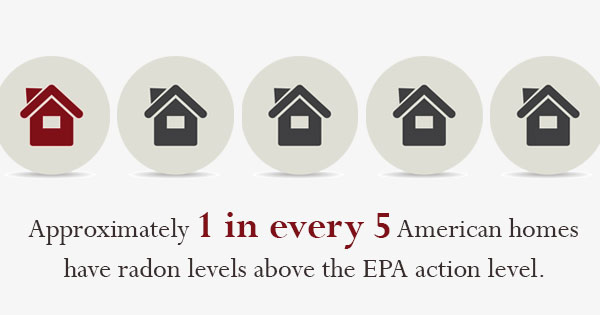
Radon is a colorless, odorless, and tasteless gas that can build up in any American home. Approximately 1 in every 5 American homes have radon levels above the EPA action level. This is dangerous because the risk of lung cancer increases by 16% per 100 Bq/m increase in radon concentration over a long period of time.
There are ways Americans homeowners can fight back against radon. However, radon differs from other contaminants that make their way into your home. So how to improve radon test results then?
Don’t just open the windows
Some homeowners believe how to improve radon test results is all in the windows. However, opening the windows in your house will have little effect on your home’s radon levels. What’s more is that, even if radon levels are reduced with the opening of your windows, the levels will return to their higher rates once the windows are closed.
Radon gas is different from mold and chemicals because radon makes its way into the home from the ground outside. The difference in air pressure in your home is less than the pressure in the soil. This causes the gas to transfer from the ground to your house.
Vent the right spaces
Opening the windows in your home will help to equalize the air pressure. But it will also cause a stack effect, which is when the air is thrust upward toward the roof of the house due to air pressure differences.
Instead of keeping your windows open in an attempt to reduce radon levels, consider venting the spaces near the floor such as your basement or crawl space. Reducing levels of radon in these areas will help to reduce radon levels in the housing space above. However, it must be noted that these natural ventilation techniques only work for temporary approaches to radon reduction.
Contact the professionals
First, to figure out whether or not your home truly has a radon problem you’ll need to contact a residential radon testing service. Radon testing companies will help to monitor and measure the levels of radon in your home.
If your home’s radon test results are problematic, your radon testing service will then conduct a radon mitigation and abatement plan. Radon mitigation is essentially the depressurization of your home to help reduce radon levels. Through a vent pipe and a fan, the radon gas is pulled from beneath the home and outside where the concentration won’t be a danger to your family.
The buildup of radon gas in a home can be dangerous to your health. For more information on how to improve radon test results, contact a radon mitigation and abatement service today for a consultation.

Recent Comments